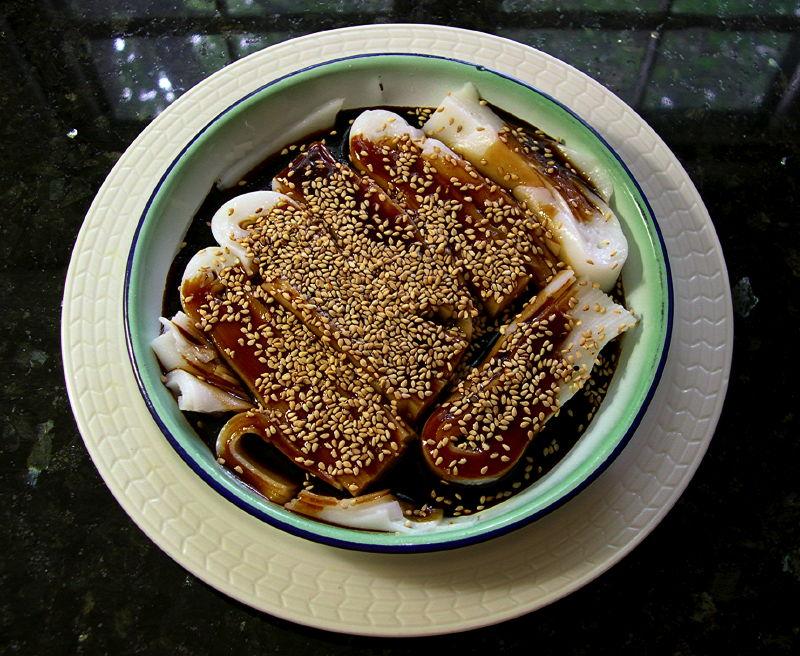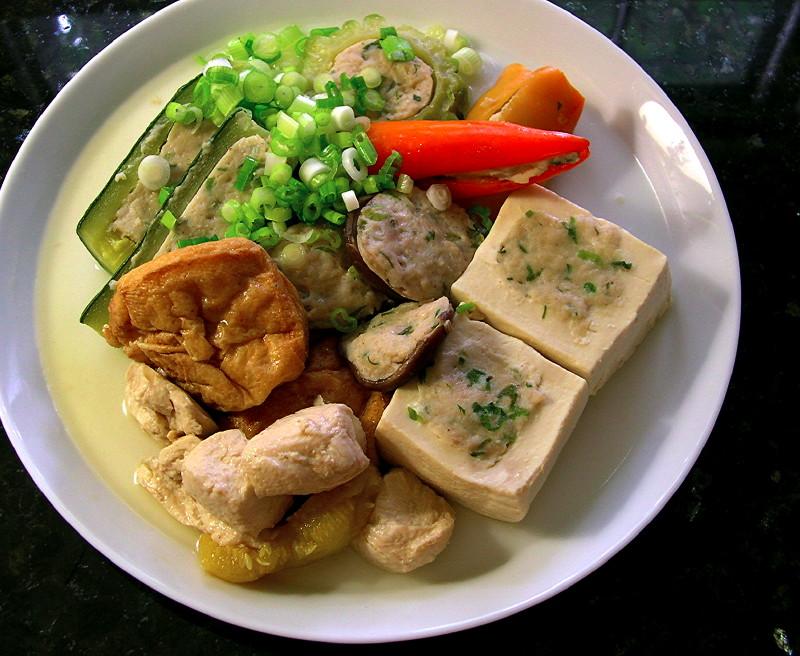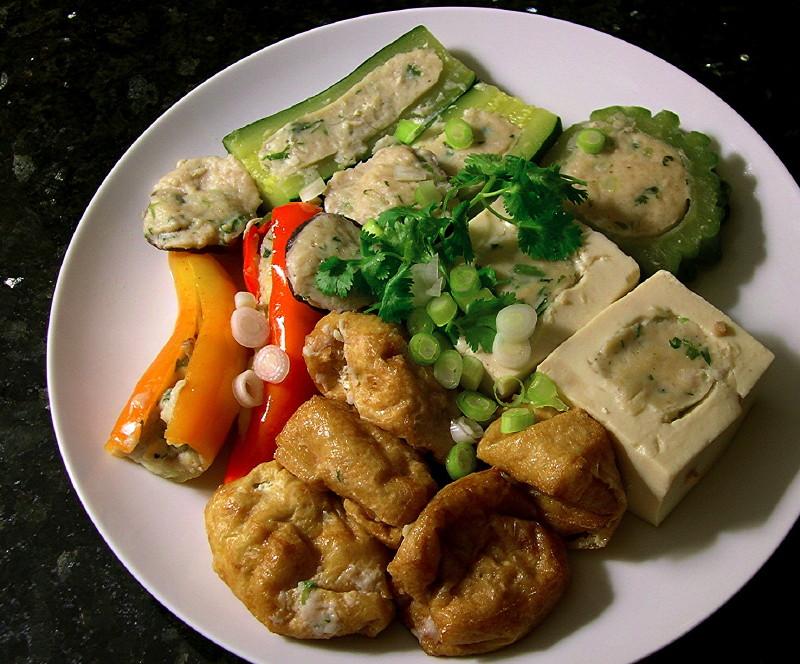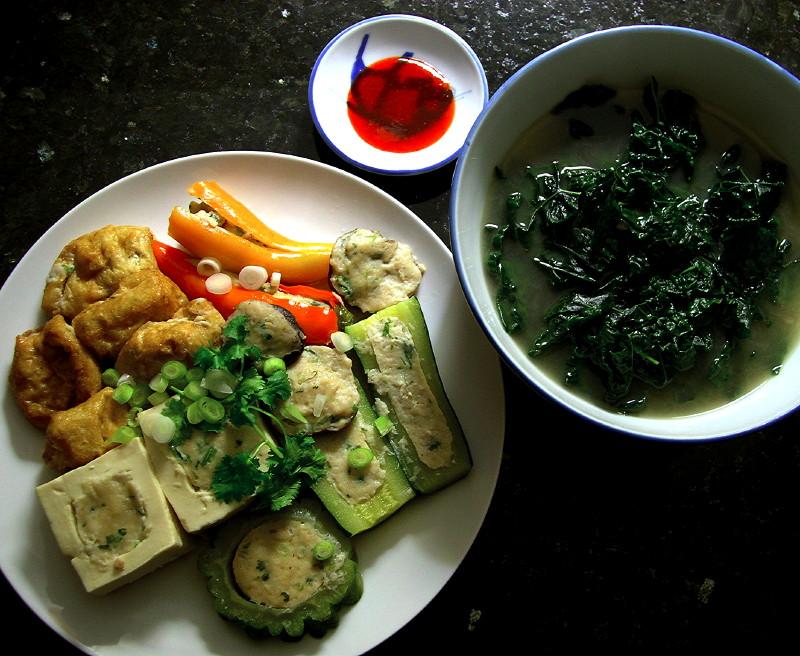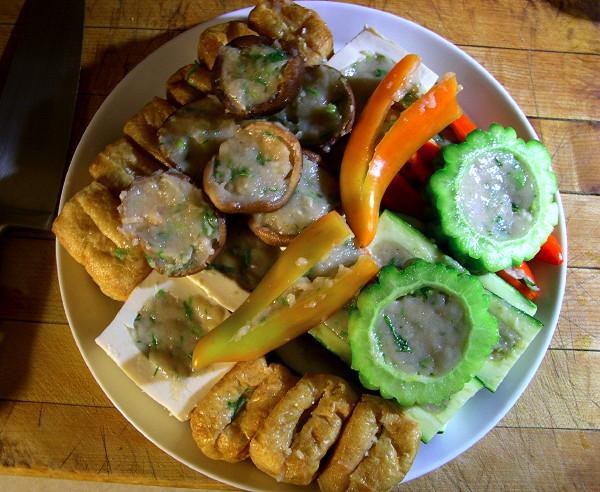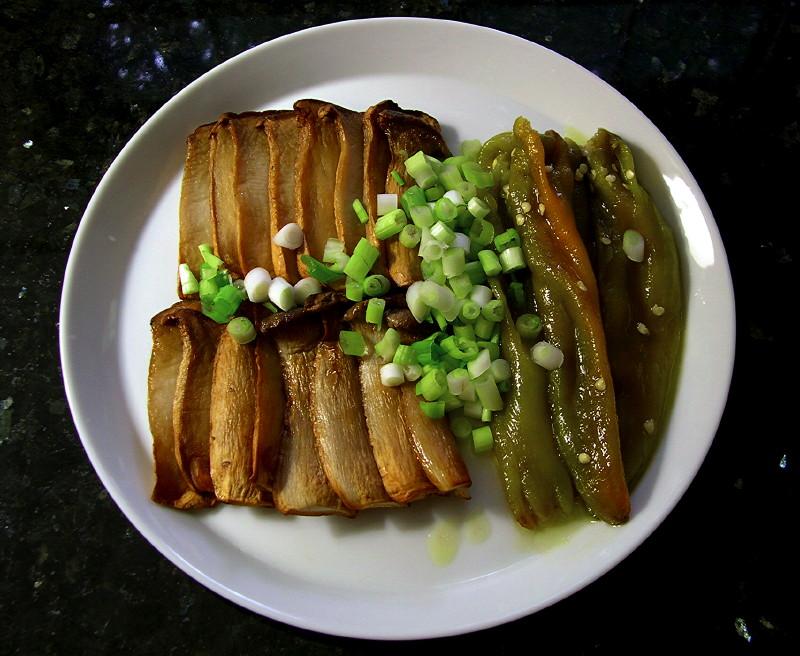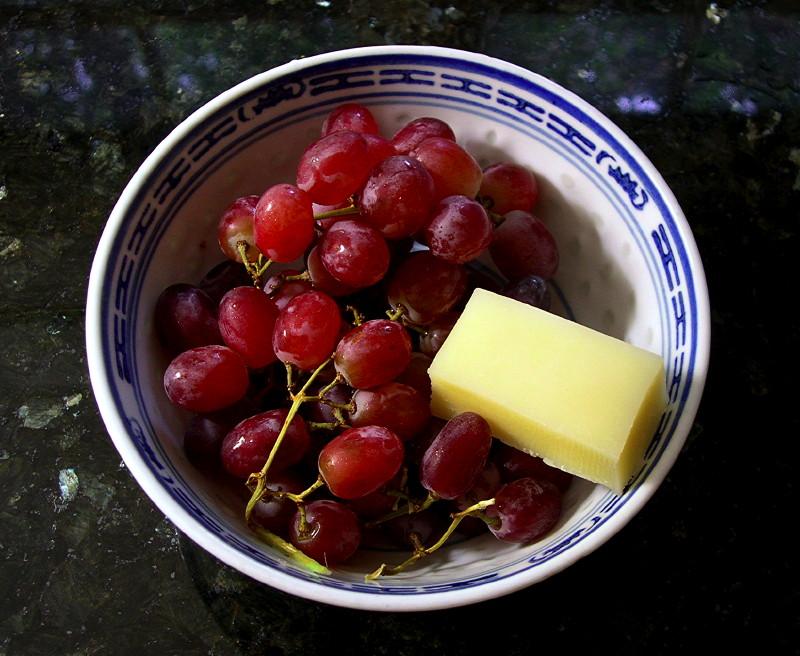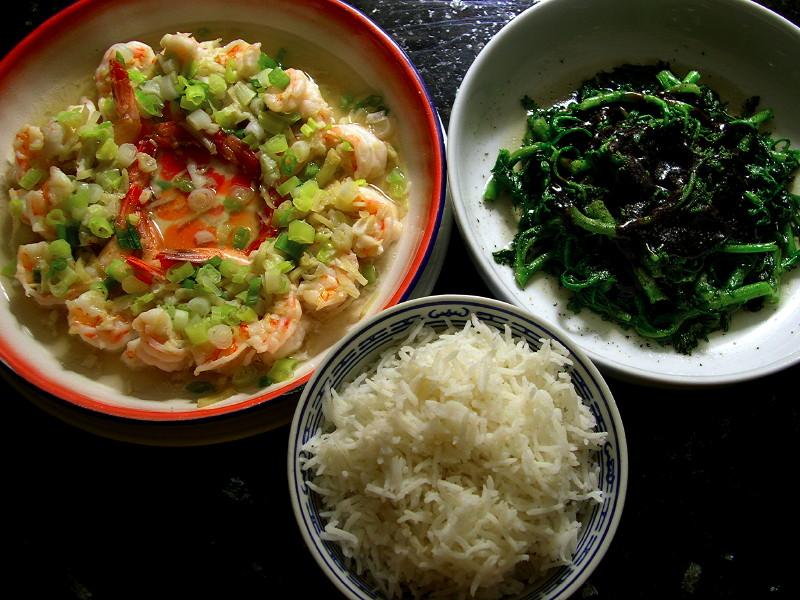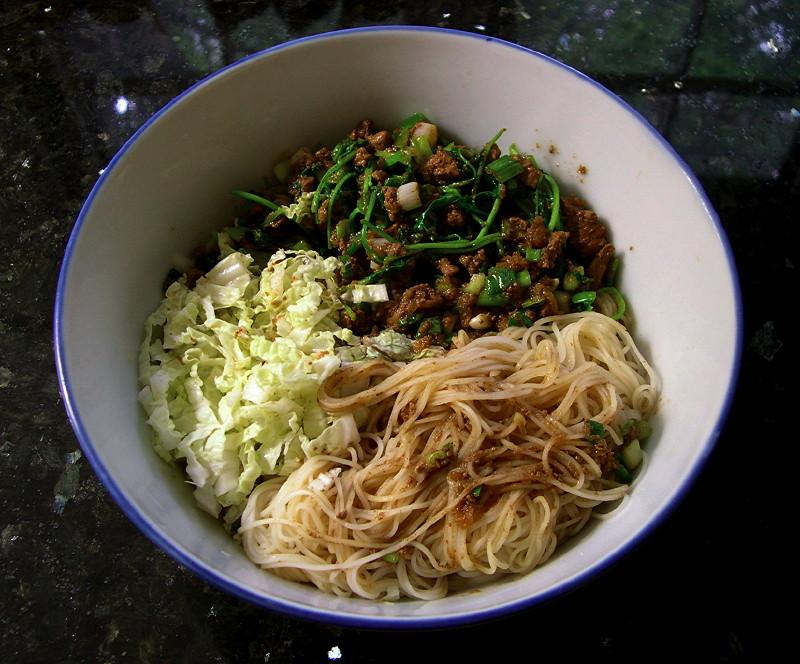-
Posts
3,810 -
Joined
-
Last visited
Content Type
Profiles
Forums
Store
Help Articles
Everything posted by huiray
-
I had deleted a "commentary" I appended to my previous (last) post in this thread but perhaps I will recreate it, especially in the light of what querty asserts. Asymmetry is a common feature in a great deal of visual representations, with some cultures incorporating such things very well. Japanese arts, in particular, and Chinese arts to a lesser extent; while Western art also has the concept expressed in many ways. The issue often involves (and circles back to) what is visually pleasing, whether it provokes disquiet or serenity. The concept of "balanced asymmetry", well-developed in Japanese art particularly (but by no means limited to it), is something that folks have incorporated into their own development of their concepts of how art is to be expressed. Transfer of such concepts to the culinary arts is nothing new - but it takes a skilled artist-chef to pull it off successfully. Unfortunately, many of these folks lack the skill to do so. The best achieve it.** The rest decry the fuddy-duddy-ness of people who find their "creations" to be less-than-inspiring. ** Whether that is done with tweezers or not as the case may be. ;-)
-
Well, in Indy I can get Shaohsing wine, drinking quality (no salt), from my local FOOD STORE/grocery, as well as good drinking sake, other Chinese drinking wines, etc. I have had no occasion to need to look for Shaohsing wine without salt in Chicago so have never paid attention to that. In any case, i myself don't think "cooking wine" (in this case Shaohsing wine w/ salt) is to be SHUNNED. It's fine for most purposes, especially when one is cooking a dish where lots of other flavorings and spices and etc go in. Besides, one would need to salt the dish anyway. Using high quality drinking Shaohsing wine may be a waste, in such instances, in my view. p.s. ...and I can get very good drinking sake (of very high quality) from a Japanese FOOD STORE in my area.
-
Ah, OK.
-
• Sort-of "hor fun" fresh rice noodles, as a stand-in for "chee cheong fun"; steamed; dressed w/ "tim cheong" (a savory-sweet sauce,¶ similar to what is found/served in Malaysia & Singapore on CCF). Further dressed w/ toasted sesame seeds. • Remainder of the "Yong Tau Foo" from dinner the previous night. ¶ Made from ~7-8 parts hoisin sauce, ~3-4 parts light soy sauce, ~1 part dark soy sauce, a small splash of sesame oil, some water, a decent splash of hon-mirin, juice of half a fresh lime. Simmered gently and reduced down.
-
Uhh, Thai eggplants are available from Chinese/SE Asian groceries, often in QUITE a good condition, at times other than the growing season in, e.g. NY state. One need not limit one's eating of these eggplants to ONLY what one grows in one's garden...just sayin'. Besides, I'm not sure what is gained by freeze-drying these eggplants and any dang other thing or vegetable. One can pick these up as non-freeze-dried stuff from any number of groceries or markets, "ethnic" or otherwise, throughout the year, so long as one is not fixated on eating stuff that has ONLY been grown in one's own backyard. YMMV. My 2¢.
-
Oops. Another correction. It's on the west side of S Wentworth, not the east side. I took a look at Google Maps and the name of the place is Tai Wah Grocery, at the SW corner of S Wentworth & W 22nd Place. I check them out because they often have open crates of the veggies they get (such as the gai lan I mentioned) rather than already-packaged stuff and I can pick through it. It's not much good for most other stuff IMO (although I have picked up roast duck & some odds and ends on occasion before).
-
• Yong Tau Foo. Soft tofu blocks, tofu puffs, fresh small "tung koo", bittergourd, zucchini, sweet orange & hot red (jalapeño?) peppers (from the "miscellaneous" bin at the grocery); stuffed w/ fish emulsion [Venus] mixed w/ chopped scallions & coriander leaves, ground white pepper, light soy sauce, sesame oil. Poached in chicken stock. • De-ribbed Tuscan kale in the poaching stock (yum!), water added to make up for volume lost to evaporation. • Lingham's Hot Sauce. After stuffing before poaching: ETA: It occurred to me that folks might think of "fish emulsion" as the sort of thing known in the Western World as fish fertilizer, from a liquid-y extract of fish bits and pieces. That is NOT what is used here nor what is implied by the term in a E/SE Asian context. This is a fish paste, made from fish meat scraped from the whole fish (typically using a spoon). It's the sort of stuff used for fish balls, and surimi (especially in the proper Chinese/Japanese context) when handled appropriately and perhaps mixed with other nice stuff.
-
What time do you plan on going to Phoenix for dim sum? On a weekday or on a weekend? (It makes a difference) On weekends cart service (if you like that sort of thing) starts around 9-ish more like 10 am. Order-by-card otherwise, and on weekdays. I'd try to get there before 11 am on a weekend otherwise the queue becomes horrendous. Grocery shopping - I usually go to Chinatown Market, that stand-alone building up a bit from Phoenix on S Archer, just before the corner, with its own "car park" on the NE side. I also like to drop by the first "grocery store" on the east side of S Wentworth just south of Cermak - they often have very nice gai lan. :-) Otherwise I pick up stuff along Wentworth or Archer as catches my eye. I also never leave the place without picking up roast duck and roast pork and char-siu and sometimes some form of whole chicken (spring onion, soy sauce, etc) from Great Wall, the second shop NE from the "middle split" of the arcade on the NW side of Archer opposite Phoenix. I might also pick up those inimicable "Chicago Chinese-'Murcan spring rolls" w/ peanut butter in them from the place. :-) I wouldn't choose that place to have a sit-down meal but I like their charcuterie. :-D Yum. Consider swinging by N Broadway & Argyle. (Will you have a car?) Little Vietnam, sort of, but the overlap w/ Chinese stuff is great. Try Tai Nam Market, in the mini-mall off Broadway just south of Argyle. Have you also considered having a meal at Sun Wah BBQ and having their Cantonese rendition of Peking Duck? :-) Or have a nice bowl of phở at one of the Viet places for this. Or pick up Thai sweets from the place just south of Tank Noodle. :-)
-
I used to do a lot of freeze-drying (lyophilizing) in the lab, but in the format where frozen solutions are externally attached to the manifold or chamber-(platform) leading to the condensating drum. Typically one used dry-ice/acetone (this was adequate) or liquid nitrogen to rapidly freeze the solution while creating maximal surface area for the sublimation by rotating the flask. Cooling done to the temperature of the cooling bath. Solutions of water-soluble peptides, proteins, immunogens, protein-drug conjugates, other water-soluble substances/molecules, that sort of thing. If organic co-solvent was present one removed most of it first on a rotovap before freezing and lyophilizing. Vacuum on the freezemobile was not applied until the drum was at least -30ºC. Vacuum was preferably at less than 100 mT, but "several hundred" mT was adequate. Ambient heat was sufficient to drive the sublimation; the outside of the vessel would "freeze over" with atmospheric water vapor and insulate the vessel sufficiently so that heat transfer from the surroundings was slow enough to maintain the internal temperature well below the melting point; in fact the temperature of the "ice layer" around the flask would frequently be a fair bit below 0ºC and this ice layer would not melt until the lyophilization was nearing the end and water sublimation was ceasing. But perhaps folks in MClabs know all this? The freeze-dryer you have is the sort more common in the food industry and in pharmaceutical or medical scenarios - e.g. freeze-drying multiple vials of (aqueous) vaccine, medical formulations, etc - as you well know. The sort of freeze-dryer used in chemistry and biochemical labs tend to be of the sort I described - like this one or this one - just so folks know there are two basic formats for the process.
-
Maggi sauce. Wiki section. One uses just a dash of it or just several drops. Why not try asking the cooks in the take-out places next time?
-
There are different grades of filter paper with different porosities. The clogging of Whatman#1 with fine particulates is a common phenomenon in the lab, heh. How about a sintered glass funnel (I'd go w/ M porosity) plus a bed of celite, prewetted and tamped down with a spatula or (preferably) a glass rod made so that it has a flattened end? Highly aqueous solutions would tend to mess up the celite, though, so high-proof (high alcohol) stuff would work better. (Of course, in this case the use of anhy. MgSO4 or Na2SO4 etc would not be advisable because these would be aqueous solutions... :-) )
-
OK, now try adding a few dashes of Maggi sauce or of fish sauce and see if that gets you closer... :-) (Not saying that THAT is what the take-outs use)
-
Yes, that's right. I remember comments about the bits of food representing everyone and everything cowering at the edges of the forest, whatever, trying to escape from the evil queen represented by the "bloody handprint"...and also remember Paul Qui remarking that he was having difficulty himself keeping things from falling off the edge of the plate, before he got them to the judges! So, there was a context - but it wasn't needed - the plate with the black chicken leg, claws and toenails and all (photo #8; chef Grayson Schmitz) - perfectly centered on the plate -was just as "horrifying" (and more elegantly gothic, I thought) and I seem to recall that Eric Ripert was pushing for her plate. I myself thought Qui's plate was a little too unbalanced and would have preferred Schmitz's plate. (Paul Qui won that episode) In a "more usual" restaurant scenario asymmetrical plates also have that "shock value" in a related sense but there are other ways to catch one's attention. (((Shrug))) Eh, asymmetry makes things more interesting but there is such a thing as going overboard with it, especially when there is vast empty acreage left on enormous plates.
-
FeChef, have a look back at this post and the resulting conversation? Have you also tried Maggi sauce? Or tried that pork-shrimp stock?
-
Photo #12 in this set. :-)
-
Here's a plate from the former Avenues (closed a few years back) in The Peninsular in Chicago. :-) I would say every bit of "decoration" were individually placed/positioned by tweezer, and probably the two slices of fish as well. The last time I ate there (before they closed) I sat at the "kitchen table/bar", a high counter running on the other side of the open kitchen, and watched the chefs assemble the plates 3 feet or so in front of me. Lots of tweezers all over the place. I actually asked them for a pair of chopsticks to eat my food and they stared at me like I had three heads. :-) ----------------------------- As for "asymmetrical plating", some of you might remember this plate. :-D
-
:-) Mine were fairly hot. Somewhere around (milder) Jalapeño-hot or less, definitely more than Anaheims (at least the ones I've tried). These definitely retained a kick after the broiling & marinating.
-
• Pan-fried (generous oil) sliced King Oyster mushrooms. • Hatch chiles broiled, blistered skin stripped off, marinated overnight w/ EV olive oil, sea salt, hon-mirin [Takara]. • Whole-grain sesame seed lavash crackers (not pictured). • Red seedless grapes, w/ Tarentaise cheese.
-
Thanks for that article, heidih. Interesting. I myself have never eaten pimento cheese, that I can recall. I confess I also don't feel an overwhelming urge to do so now either...
-
Plain ol' vegetable oil. p.s. Thanks for the compliment.
-
Although not a listing of academic material/research/papers, there is an old thread here on eG that may be of interest to you that relates to the subject matter you have in mind: http://forums.egullet.org/topic/143967-your-most-disliked-trend-in-the-food-industry/
-
That's a common misconception in the West. (Ditto that soy sauce is to be poured onto everything on the plate, no matter what is on the plate) There are many recipes where soy sauce is not used. Personal preferences also enter into this issue. Perhaps it might be worthwhile to pick up a cookbook or two on Chinese cuisine one day, of whatever regionality, and browse through it? (Preferably written by a chef-author who is either Chinese or knowledgeable about the various cuisines :-) )
-
• Steamed prawns. De-shelled this time, de-veined; marinated in and steamed with Shaohsing wine, oil, scallions, ginger, sea salt. Don't remember now if anything else went in... • Tong Ho (garland chrysanthemum) blanched in oiled hot water, dressed w/ oyster sauce & ground black pepper. • White rice. ETA: Duh. Yes, lots of chopped smashed garlic (Siberian Red) also went into the steamed prawns dish.
-
Fuzhou-type skinny wheat noodles (麵線; min6 sin3) with the remainder of the liver sauce from here re-simmered w/ fistfuls of trimmed coriander leaves & a heap of chopped scallions. Seasoning adjusted. Accompanied by chopped raw wong nga pak (Napa cabbage), leafy parts.
-
gfron1, just buy them. :-) They can be had by the bagful (i.e. just the salted egg yolks) from certain Chinese supply shops/groceries. Otherwise - I'm not entirely sure how the large commercial batches of salted egg yolks are made – separated yolks then salted; or whole eggs salted then opened and the yolk retrieved w/ the whites tossed or repurposed. If you are making just a few mooncakes I might be inclined to simply extract the yolks from whole salted eggs. p.s. if you don't already have the salted egg yolks in hand it's too late to make your own AND make the mooncakes the next day. p.p.s. the usual/traditional egg is DUCK egg. p.p.p.s. Note that these salted egg yolks are different from the ones one can see/read about being prepared and used in various Western-idiom dishes/cuisines. The salted egg yolk (not fish roe) that is grated over pasta, for example, is HARD (it's being grated) and very dark in color; the salted (duck) egg yolks needed for mooncakes are soft, oily, slightly chewy and definitely not hard, if they are any good.




